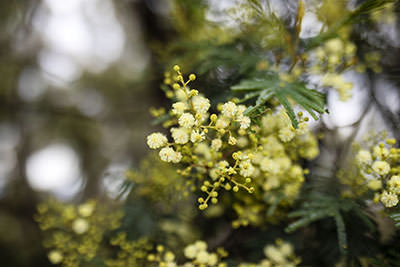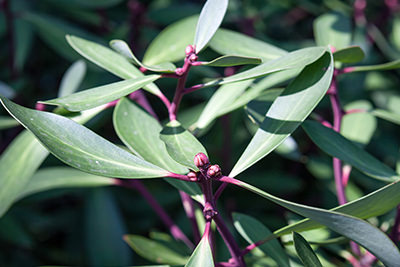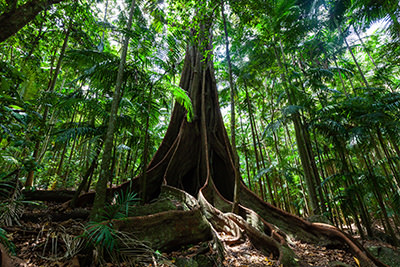LEARNING ACTIVITY
STORY
Jarrah is keen to start a garden at his school with all the plants he has learned from Adam while exploring the bush. He wishes to plant one section of the garden with foods, one with fibre plants and one with medicines. Jarrah starts to compile a list of plants and will speak with Adam and the local plant nursery about what plants may be available and suitable for his school garden. Jarrah then organised his friends to get involved and to learn with him on how to create this special garden.

For thousands of years, First Nations peoples across Australia have been growing and cultivating plants. Plants are grown for many different purposes, including food, tools, medicine, shelter, clothing, hunting, carrying, water craft, ceremony and land management. Everything they needed to survive is provided by the bush. The roots and tubers of Yam Daisy, Bulbing Lily and Chocolate Lily are harvested for teaching and eating. Kangaroo Apple, which has a sweet flavour is used for eating and medicinal purposes. Hardenbergia River Mint, and Lemon-scented Gums are used to make teas and herbs.
To understand local perspectives and support these activities, we recommend reaching out to the local Traditional Owners and First Nations peoples community groups who can assist in knowledge sharing and understanding local land, histories and culture. This is an important consideration to ensure that any reconciliation initiatives are being driven in a local, meaningful way.
This learning activity is the third part of a sequence of 6 individual learning activities focused on creating an Indigenous plant use garden. The order of these learning activities are: resources from the bush, vision, plant list, site assessment, planting and harvesting.
For children to:
- appreciate the diverse range of plants used by First Nations peoples across Australia
- explore the different ways that Indigenous plants can be used e.g. food, fibre, medicine, tools, utensils, ceremony and everyday life understand the importance of choosing local and climate resilient plants in creating an Indigenous plant-use garden.
Across Australia, there are many different climates and seasons for growing bush food and fibre. Different plants are suited to different environments. If plants are suited to the climate and are local to the area, they are more likely to grow.
Introduction
For thousands of years, First Nations peoples across Australia have been planting and utilising a diverse range of plants. This learning activity will introduce our learners to a range of Australian plants and explore the multiple uses that each plant has for First Nations peoples.
This activity will help set the foundations to creating and understanding the importance of Indigenous plant-use and creating a garden, and help select plants to include in your Indigenous plant garden.
Creating an Indigenous plant-use garden is usually different to common vegetable gardens as these plants will require different growing conditions.
Checklist
Instructions
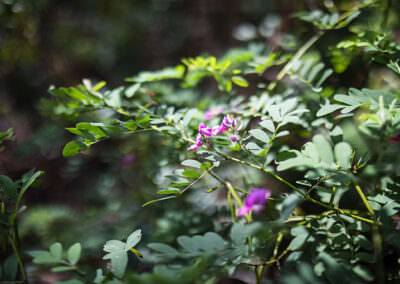
STEP 1
Begin this activity at your location with an Acknowledgement of Country. By acknowledging the Land, you are also making a promise that you will care for the land, the waterways, the plants and the animals.
For thousands and thousands of years, First Nations peoples have utilised the environment for everything they needed to survive.
Discuss how nature could be seen as a shopping centre for food, tools, medicine, shelter, clothing, hunting, carrying, water craft, ceremony and land management for First Nations peoples.
Focus on how First Nations peoples used and still use different plant parts such as root, leaf or shoot, flower, fruits, seeds, stems or wood.
Refer to the activity sheet and discuss the list of Indigenous plants that have been included. In the discussion, encourage the learners to share their knowledge including:
- which plants are familiar to them?
- where may these plants be used? food, medicine, utensils etc.

STEP 2
It is important for our learners to understand the importance of planting native plants local to the region and resilient to climate.
Following the initial discussion, ask each student to choose five plants that were/are commonly used by First Nations peoples to research, focusing on:
- how the plant was/is used and which parts were/are used
- where in Australia does it naturally grow
- growing conditions needed.
Use the activity sheet to record findings.
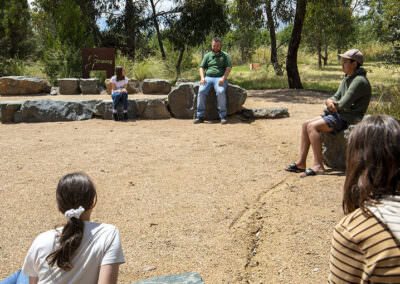
STEP 3
After completing the activity sheet, discuss the results as a group.
For each plant, decide if it will be suitable to grow in your area. Discuss the conditions required by the plant. Can this be provided in your garden?
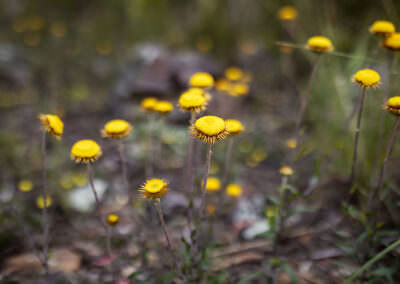
STEP 4
Now that you have considered suitable plants, finalise your list of plants for your garden referring to your activity sheet.
Extension Activity
Extension 1
Reach out to your local Traditional Owners and First Nations peoples community groups to assist in knowledge sharing and understanding of local land, stories and culture.
Extension 2
Research different methods First Nations peoples used/use to harvest plants.
Curriculum and Framework Links
Check the curriculum authority for your state or territory for Aboriginal and Torres Strait Islander specific subjects. This may also include training organisations.
GEOGRAPHY
Year 7: ACHGK045
Year 8: ACHGK049
Year 9: ACHGK061, ACHGK062, ACHGK064, ACHGK067
Year 10: ACHGK070, ACHGK071, ACHGK072, ACHGK076
HISTORY
Year 7: ACOKFH003, ACDSEH031
Year 9: ACDSEH085, ACDSEH020
DESIGN & TECHNOLOGIES
Years 7 & 8: ACTDEK032, ACTDEK033
SCIENCE
Year 7: ACSSU112, ACSSU116, ACSHE223, ACSHE121
Year 8: ACSHE134, ACSHE226
Year 9: ACSSU176
VISUAL ARTS
Years 7 & 8: ACAVAM118, ACAVAR124
Years 9 & 10: ACAVAM125, ACAVAR131
EARTH & ENVIRONMENTAL SCIENCES
Year 11: ACSES011, ACSES040
Year 12: ACSES066, ACSES077, ACSES081
BIOLOGY
Year 11: ACSBL011, ACSBL019, ACSBL020, ACSBL009, ACSBL011
GENERAL CAPABILITIES
Critical and Creative Thinking
Personal and Social Capability
Ethical Understanding
Intercultural Understanding
CURRICULUM CONNECTIONS
Outdoor Learning
CROSS CURRICULUM PRIORITY
Aboriginal and Torres Straight Islanders Histories and Cultures
Sustainability
Reference List
Complete the Whose Country are you on? learning activity to determine the local First Nations peoples language group.
ONLINE RESOURCES
Aboriginal Plant use in South Eastern Australia and Aboriginal Plant use and technology, from the Australian National Botanic Gardens provides some insightful and educational information that will assist in completing this learning activity.
Guide to the Aboriginal Garden Monash University is an excellent guide providing a detailed listing of plants and their First Nations peoples use from Monash University.
The Care for Country RAP (Reconciliation Action Plan) Action and Caring for country (Secondary) curriculum resource on the Narragunnawali platform provides resource material for students and teachers to build a personal sense of responsibility for respecting and caring for the Country/place around them, the while building an awareness and appreciation of Aboriginal and Torres Strait Islander contributions to sustainable land management
WATCH
Watch the story (7 minutes) of Aboriginal Artist and Bush Food grower Cassie Leatham as she shares her artworks and knowledge as a cultural educator and artist.
READ
Guide books for your local area.
Field guide to Useful native plants from temperate Australia, Judith Caton & Richard Hardwick, Harbour Publishing House, 2016 provides very useful visual information along with growing conditions and First Nations peoples uses for plants in temperate areas.
This selection of books gives more detailed information on Australian native plants, their traditional uses and modern uses and recipes.
- The oldest foods on Earth, John Newton 2019 published by NewSouth Publishing
- Grow your own bushfoods, Keith and Irene Smith, 2013 New Holland Publishers
- Australian Native Food Harvest, Julie Weatherhead, 2016 published by Peppermint Ridge Farm.
NETWORK
We recommend reaching out to the Local Traditional Owners and First Nations peoples community groups who can assist in knowledge sharing and understanding local land, language, stories and culture.
To reach out or find contacts in your local Aboriginal and Torres Strait Islander community you could speak to parents of First Nations students, to an Indigenous Learning Officer (ILO) at your school, local Land Council or a local Landcare group. Engaging with these resources can contribute to a wider school and community reconciliation initiatives, including a schools Reconciliation Action Plan (RAP).
We have some suggested organisations to approach listed on our Junior Landcare Community Page and in more detail within our Educator Notes.
Why not try one of our other Junior Landcare learning activities?
Creating an Indigenous plant-use garden: resources from the bush
First Nations Perspectives
Love Letters to the Land
Biodiversity|First Nations Perspectives|Food Production|Waste Management
Creating a yarning circle: involving First Nations people
First Nations Perspectives
Creating a yarning circle: yarning circle activities
First Nations Perspectives
